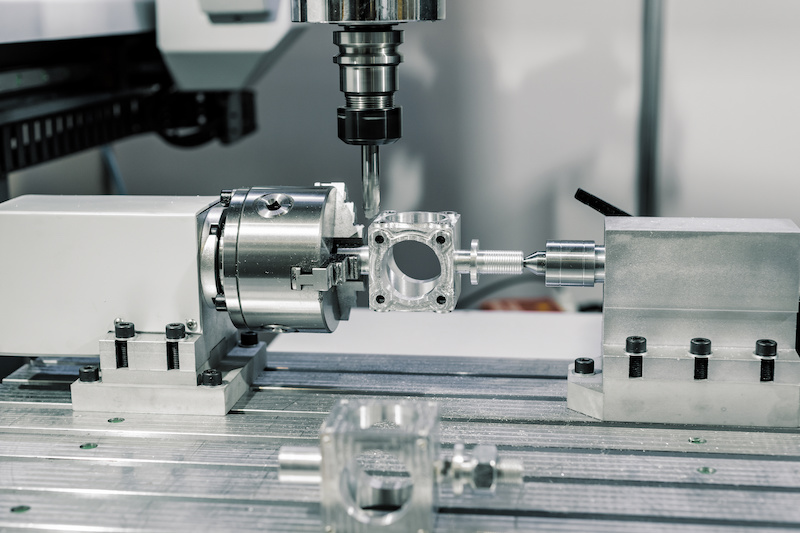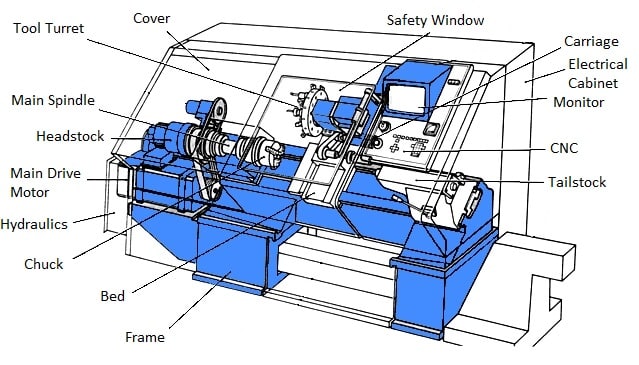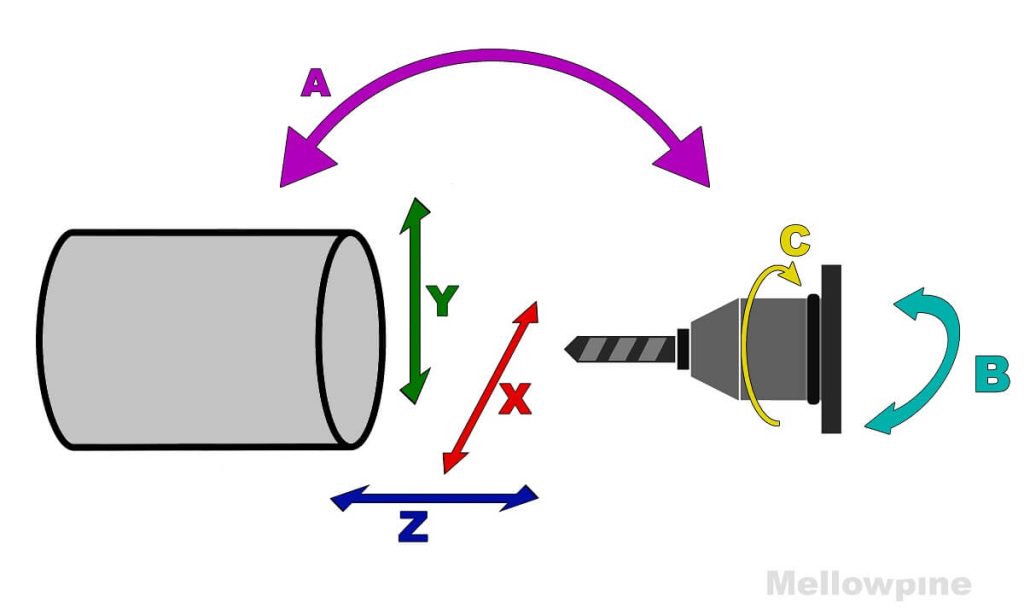Table of Contents
Paragraph 1: Are you looking to add some curves to your CNC lathe projects? Cutting a radius on a CNC lathe may seem like a daunting task, but with the right tools and techniques, it can be a breeze.
Paragraph 2: In this guide, we’ll walk you through everything you need to know to cut a radius on a CNC lathe, from selecting the right tooling to programming the machine. Whether you’re a seasoned CNC machinist or a beginner, we’ve got you covered. So, let’s get started!
How to Cut a Radius on a CNC Lathe?
To cut a radius on a CNC lathe, follow these steps:
– Set the tool nose radius compensation value to the desired radius.
– Use G01 or G02/G03 to program the radius.
– Ensure the tool is oriented perpendicular to the surface.
– Adjust the feed and speed rates according to the material and tool being used.
– Test the program with a small cut to verify the radius is correct.
How to Cut a Radius on a CNC Lathe?
Are you struggling with cutting a radius on a CNC lathe? It can be tricky to get the perfect curve, but with the right techniques, it’s not as difficult as you might think. In this article, we’ll take you through the steps to cut a radius on a CNC lathe, so you can create the perfect rounded shape for your project.
Understanding the Basics
Before you start cutting, it’s important to understand the basics of cutting a radius on a CNC lathe. A radius is simply a curved shape with a constant distance between the center point and the edge. To cut a radius on a lathe, you’ll need to use a special tool called a radius cutter. This tool is designed to cut the curve you need, and it’s essential for getting a smooth, consistent shape.
To start, you’ll need to set up your lathe with the right tools and materials. Make sure you have a good quality radius cutter, as well as the right size and type of stock for your project. You’ll also need to adjust the settings on your lathe to ensure you’re cutting at the right speed and depth.
Benefits of Using a CNC Lathe for Cutting a Radius
Using a CNC lathe for cutting a radius has several benefits. Firstly, it allows for greater precision and accuracy than manual cutting. With a CNC machine, you can program the exact shape you need and let the machine do the work. This means you can create complex shapes with ease, and ensure a consistent result every time.
Another benefit of using a CNC lathe is that it can save you time and money. Because the machine is doing the work, you don’t need to spend as much time on manual labor, which can be a big time-saver. Additionally, the precision of the machine means you’re less likely to make mistakes or waste materials, which can save you money in the long run.
Steps for Cutting a Radius
1. Set up your lathe with the right tools and materials. Make sure you have a good quality radius cutter, as well as the right size and type of stock for your project.
2. Adjust the settings on your lathe to ensure you’re cutting at the right speed and depth. Consult your lathe’s manual for specific instructions.
3. Load your program into the machine, making sure to include the necessary code for cutting a radius.
4. Position your stock in the lathe and secure it in place.
5. Start the machine and let it cut the radius. Keep a close eye on the process to ensure it’s going smoothly.
6. Once the radius is cut, inspect the result to ensure it’s the right shape and size. Make any necessary adjustments if needed.
7. Repeat the process for any additional radii you need to cut.
CNC Lathe vs Manual Lathe – Which is Better?
When it comes to cutting a radius on a lathe, you have two main options – a CNC lathe or a manual lathe. While each has its own advantages and disadvantages, a CNC lathe is generally considered to be the better option for cutting a radius. This is because it offers greater precision, speed, and consistency, which can be crucial for creating complex shapes.
Of course, there are situations where a manual lathe may be preferable – for example, if you have a small project or need to make quick adjustments on the fly. However, for most projects, a CNC lathe is the way to go.
Conclusion
Cutting a radius on a CNC lathe might seem daunting at first, but with the right tools and techniques, it’s actually quite simple. By following the steps outlined in this article and using a good quality radius cutter, you can create the perfect curve for your project. And with the precision and speed of a CNC lathe, you can be sure that your result will be consistent and accurate every time.
Frequently Asked Questions
In this section, we will provide answers to some frequently asked questions about cutting a radius on a CNC lathe.
What is a radius cut?
A radius cut is a machining operation that involves cutting a curved surface on a workpiece. This type of cut is commonly used in the manufacture of parts that require a rounded edge or surface, such as gears, bearings, and shafts. On a CNC lathe, a radius cut can be performed using a variety of cutting tools, including carbide inserts, drills, and end mills.
The process of cutting a radius involves moving the cutting tool along a curved path while maintaining a consistent depth of cut. This requires precise control of the lathe’s spindle speed, feed rate, and cutting tool position. To achieve the desired radius, the cutting tool must be positioned at the correct angle and orientation, and the workpiece must be rotated at a constant speed.
What factors affect the accuracy of a radius cut?
Several factors can affect the accuracy of a radius cut on a CNC lathe. One of the most important of these is the quality of the cutting tool. A worn or damaged tool can cause uneven cutting, resulting in a rough or inaccurate surface finish. Other factors that can affect the accuracy of a radius cut include the rigidity of the lathe’s spindle and the precision of the workpiece’s mounting and positioning.
To ensure accurate and consistent results, it is important to use high-quality cutting tools and to properly maintain and calibrate the CNC lathe. Additionally, it may be necessary to adjust the lathe’s spindle speed and feed rate based on the workpiece material and geometry, as well as the desired surface finish.
What are some common tools used for radius cutting?
There are several types of cutting tools that can be used for radius cutting on a CNC lathe. One of the most common is the carbide insert, which is a replaceable cutting tip that can be mounted onto a tool holder. Carbide inserts are available in a variety of shapes and sizes, including those designed specifically for radius cutting.
Other tools that can be used for radius cutting include drills, end mills, and special-purpose radius cutters. Drills can be used to create small-radius cuts, while end mills are typically used for larger-radius cuts. Special-purpose radius cutters are designed specifically for cutting curved surfaces and are available in a range of sizes and shapes.
What is the difference between inside and outside radius cutting?
Inside and outside radius cutting refer to two different types of curved cuts that can be performed on a CNC lathe. Inside radius cutting involves cutting a curved surface on the interior of a workpiece, while outside radius cutting involves cutting a curved surface on the exterior of a workpiece.
To perform an inside radius cut, the cutting tool is positioned inside the workpiece and moved along a curved path. To perform an outside radius cut, the cutting tool is positioned outside the workpiece and moved along a curved path. The process for both types of cuts is similar, but the orientation of the cutting tool and workpiece is different.
What are some tips for achieving a smooth radius cut?
There are several tips and techniques that can be used to achieve a smooth and accurate radius cut on a CNC lathe. One of the most important is to use a high-quality cutting tool and to ensure that it is properly sharpened and maintained. It is also important to use the correct spindle speed, feed rate, and cutting depth for the workpiece material and geometry.
Other tips for achieving a smooth radius cut include using a coolant to reduce heat and friction, using a steady rest or other support to reduce vibrations, and using a finishing pass to achieve the desired surface finish. Additionally, it is important to monitor the cutting process and make adjustments as needed to ensure that the radius cut is accurate and consistent.
In conclusion, cutting a radius on a CNC lathe is an important process in the manufacturing industry. With the right tools, techniques, and skills, anyone can learn how to cut a perfect radius on a CNC lathe.
By following the steps outlined in this article, you can ensure that your CNC lathe produces precise and accurate cuts every time. Remember to always use the appropriate safety equipment and take your time to avoid any accidents or mistakes.
Whether you are a seasoned professional or just starting out in the industry, mastering the art of cutting a radius on a CNC lathe is an essential skill that will help you excel in your career. With practice and patience, you can become a master of CNC lathe cutting and produce high-quality products that meet the needs of your customers.
Request a quote today!
[contact-form-7 id="1578" title="Contact form"]
Please compress the file into a ZIP or RAR file before uploading. Alternatively, send through your RFQ by email.
enquires@unitymanufacture.com





